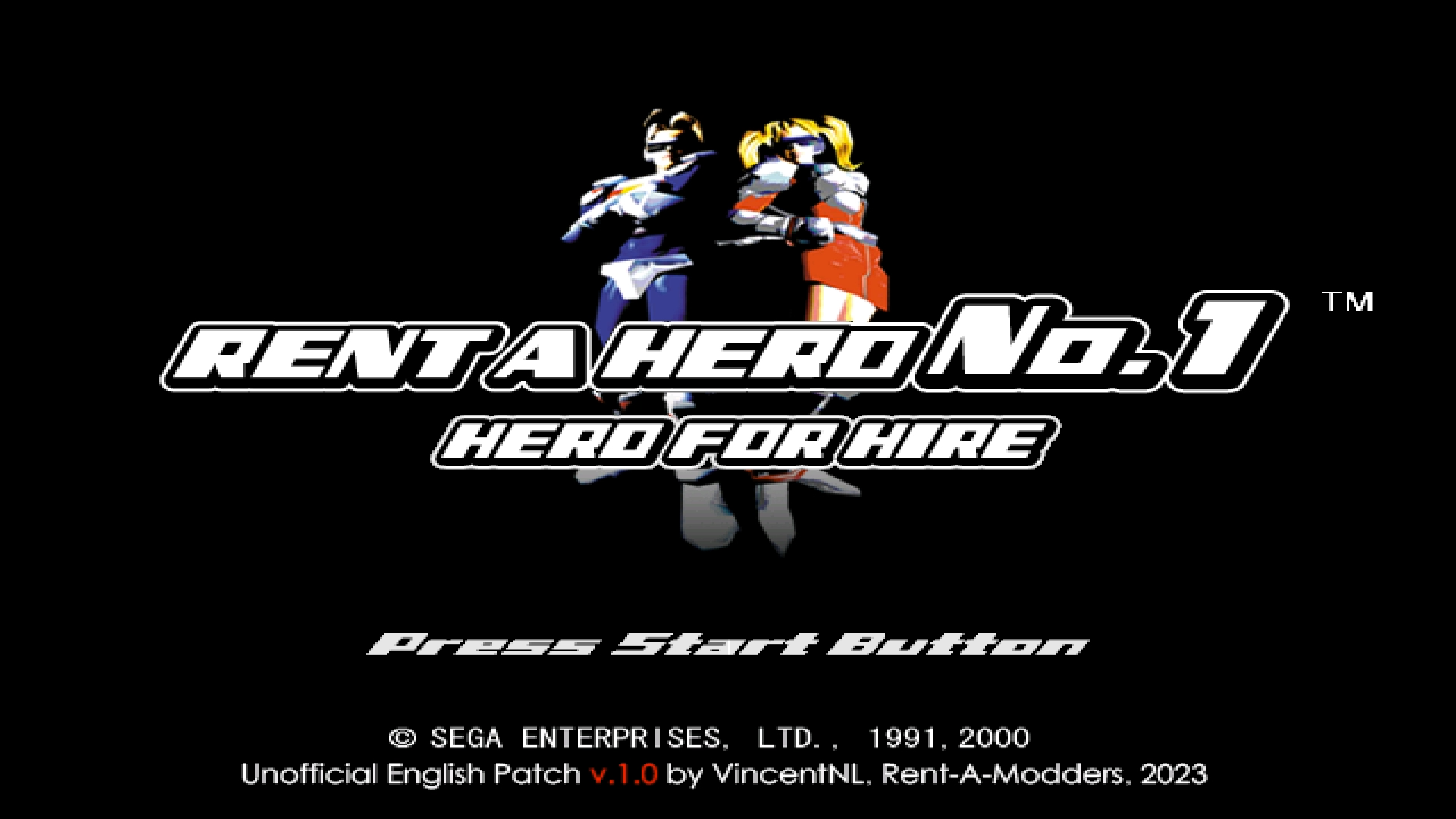In 1991, Sega AM2 and Yu Suzuki created Rent A Hero on the Sega Mega Drive, an action role-playing game that featured "beat-em-up" elements as its main form of combat. Similar to the Kunio-kun series on the Nintendo consoles, Rent A Hero featured a residential area with realistic enemies and a "slice of life" plot that doesn't go too far out of the way. Unfortunately, the game was never released outside of Japan, but the quirky plot was enough to warrant a remake on the Sega Dreamcast. This time, Aspect would handle this remake's development, titled Rent A Hero No.1.
At the time, Aspect was known to port Sega games on other consoles, including the Game Gear and the previous generation Master System. After Rent A Hero No. 1, they would develop licensed titles on the Game Boy Advance and Nintendo DS systems, including the Naruto series. Rent A Hero No. ! was released in 2000 and 2003 on the Dreamcast and Xbox respectively. Both games would be released exclusively in Japan despite an English version being near completion months before its cancellation. Earlier this year, the original Dreamcast release received a proper English fan translation, which was what I used to cover this game.
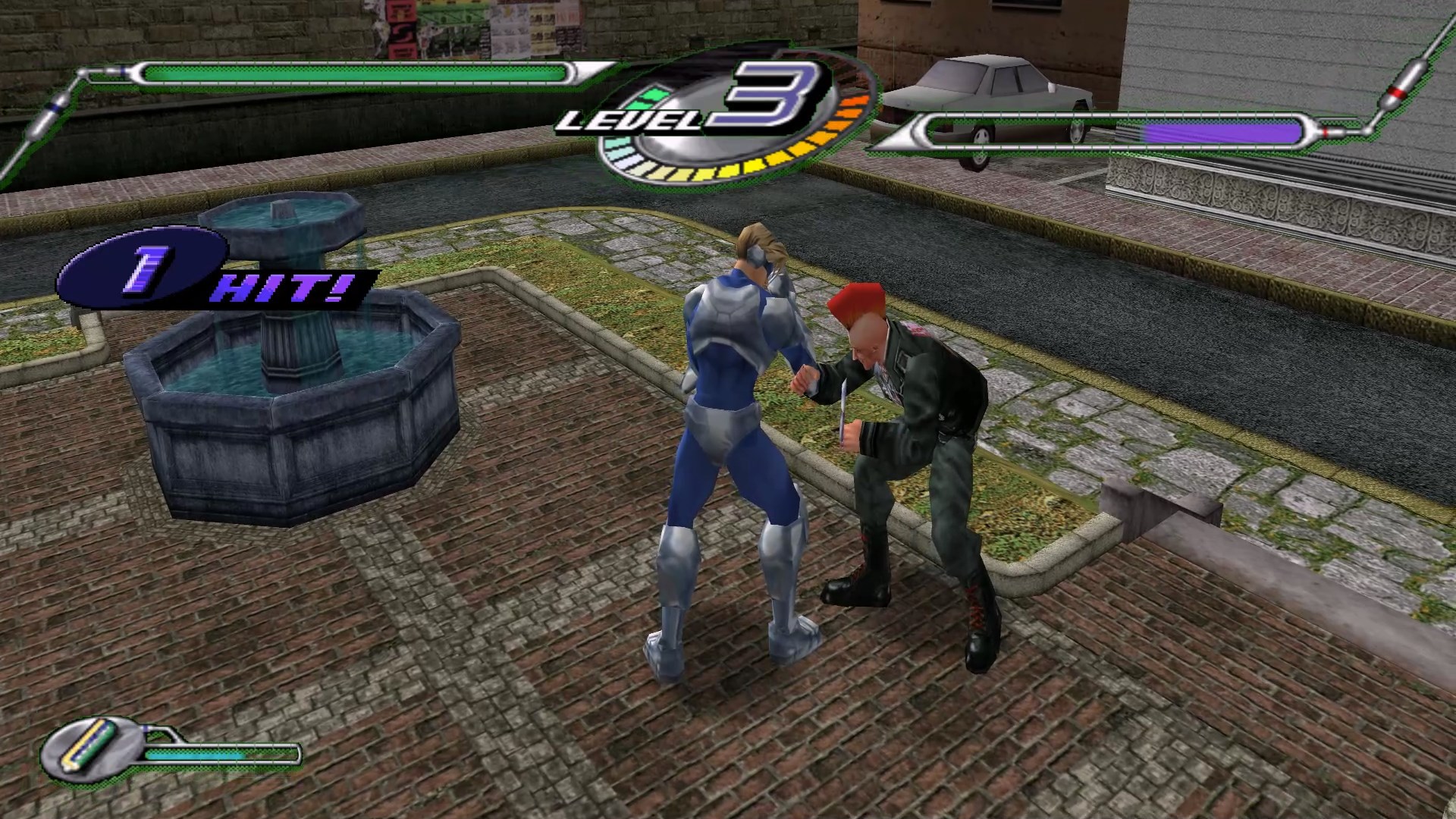
Rent A Hero's story centers around the protagonist, Taro Yamada, who moves with his family to the town of Corja. After their welcoming party, Yamada receives a unique package that contains a hero suit with a service known as "Rent A Hero." As it turns out, the 1990s had a gig economy for heroes long before Penny Larceny had one for criminals. Donning the "Rent A Hero" costume and beating your dad dressed up in a monster costume, you begin to take on odd jobs during this trial period. Handing out fliers, doing deliveries, and providing security are all but some examples of the early jobs the player will perform.
Taro's home serves as the main "base of operations" with the neighborhood acting as an open-world environment. As the player progresses in the story, more places will open as will the number of acceptable jobs. Certain jobs can be handled as a civilian or as a hero, yet the neighbors will treat the player differently depending on whether they are in costume or not.
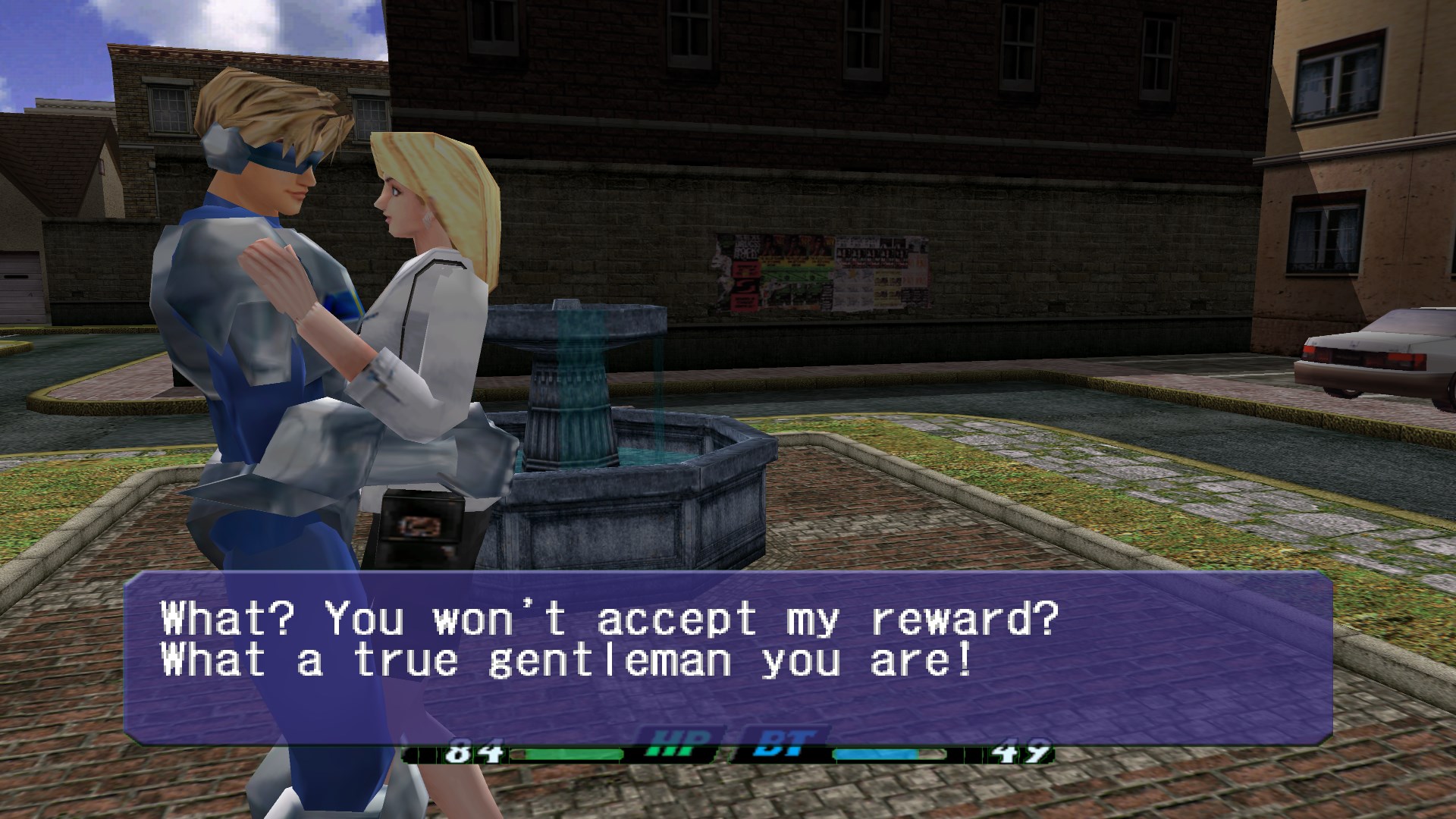
The suit is more than just a "costume," of course as it also gives the player an enhanced attack buff. Occasionally, the player will have to fight others and the suit gives them triple their regular health. Fighting in Rent A Hero is similar to another arcade-exclusive beat-em-up from that era, Slashout, which in turn is similar to Dynamite Cop.
By default, Taro will have limited moves to combo into, but as he completes challenges and missions, he will learn newer more effective moves, turning him into a legitimate superhero. However, Yamada cannot stay in the suit forever as the suit runs on batteries. Run out of batteries and the player cannot transform, so how does the player attain more? By going to the convenience store and buying more, as well as health items. After the first several missions, the "trial period" ends and the player will have to pay a rental fee to use the suit. While the fee is minuscule, it does take into account the concept of real-time, as the player will be charged in the game roughly every hour.
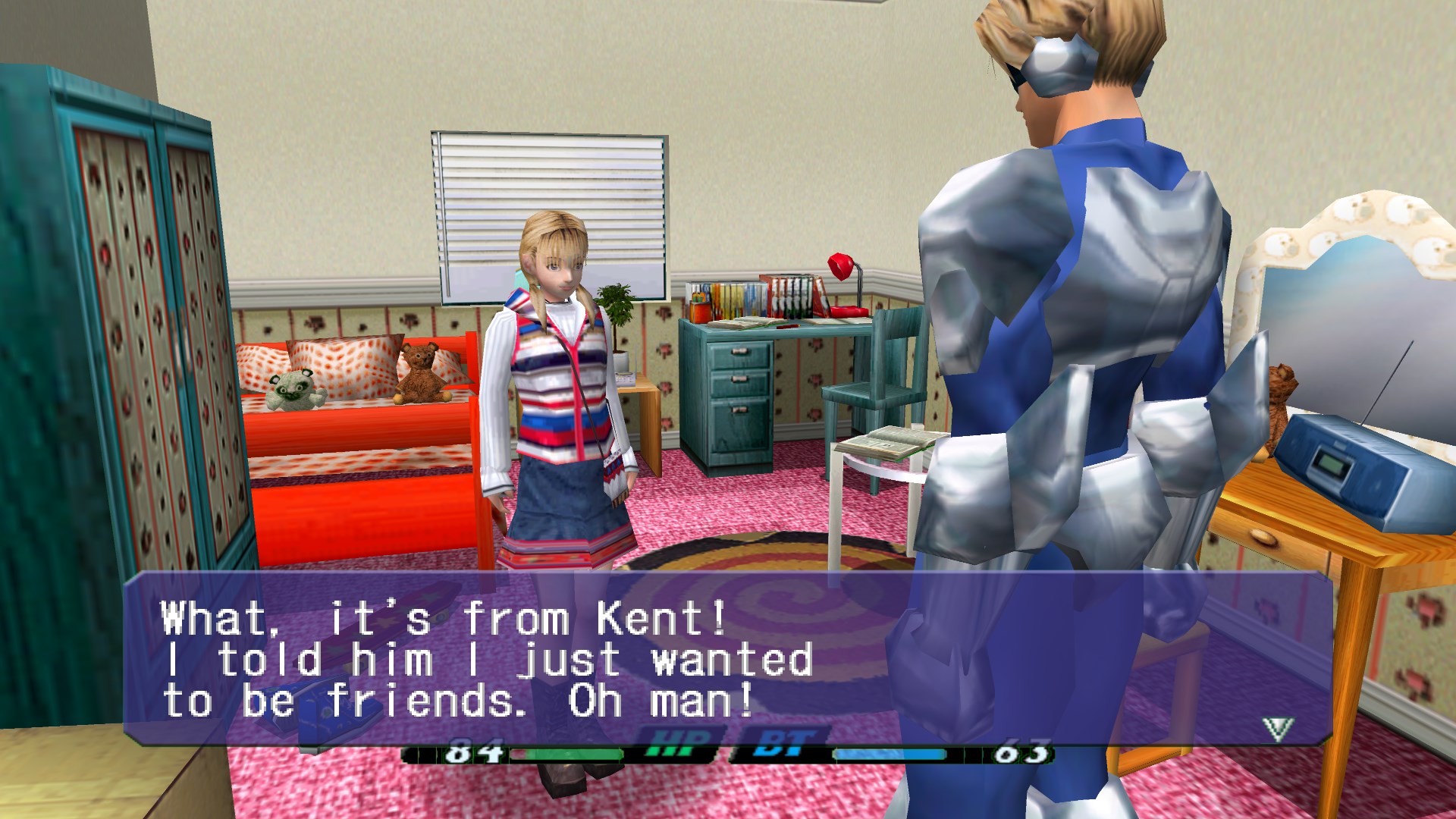
The objective quickly becomes "Take on as many jobs as possible" to earn money, which is then used to maintain the "Rent A Hero" service via renting the suit. After all, Taro Yamada is just a regular kid in a crazy town that happens to need a Part Time Hero. Yes, the "mission mode" in Yakuza Like A Dragon was borrowed from the same concept as "Rent A Hero," as expected from a fellow Sega title. At least Ichiban doesn't have to pay a flat recurring fee to maintain the "Part Time Hero" service!
Honestly, the game aged like milk, much like the original Shenmue, which I read many compared the game to at the time. While the latter is more of an adventure game, this plays like a beat-em-up with emphasis on action first. Many games that would tackle the "urban action RPG formula" decades later, including River City Girls 1 and 2, Rent A Hero introduced first. Because of a lack of a second analog stick on the Sega Dreamcast, the camera angles are a "take it or leave it" affair as it refuses to work in tight spaces, like the interior of buildings. In open spaces, it's not an issue but it made me take modern games for granted.
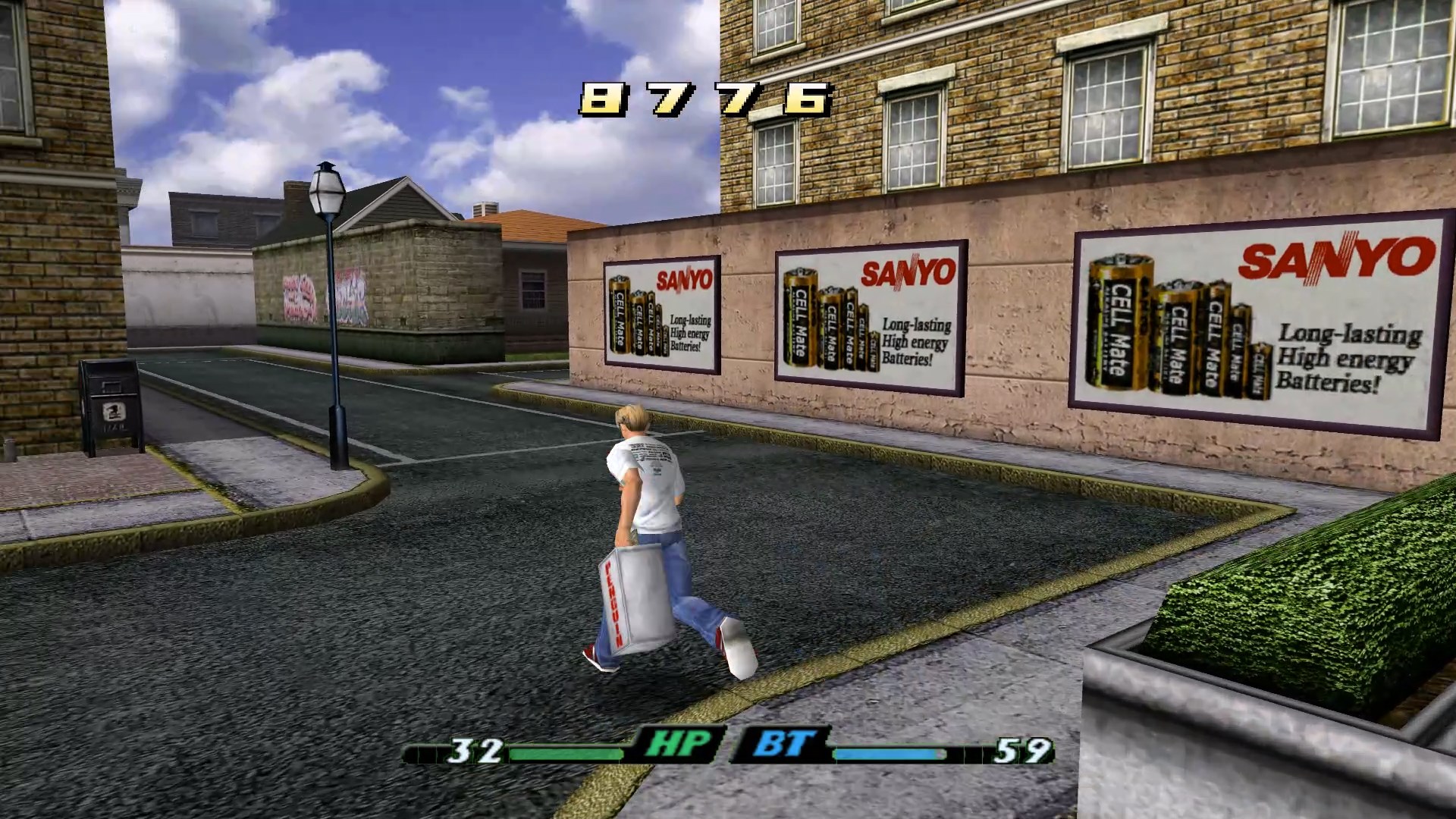
Still, to play the game in its original Dreamcast version while also being able to understand what it is I'm doing is a huge plus. With several remakes and remasters these days, it should be a no-brainer for Sega to re-release the Rent-A-Hero games or at the very least acknowledge it outside of a cheeky cameo in Like A Dragon. Sega has been known to pull miracles lately, so never say never. Be sure to check this one out but be mindful of the more archaic gameplay mechanics dated back to the turn of the millennium.

